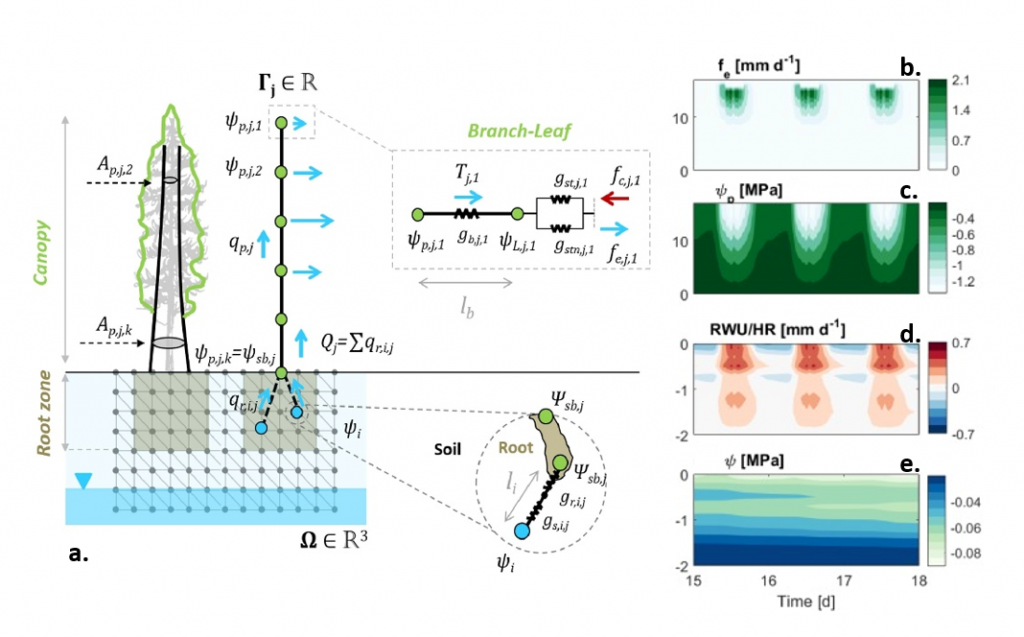
The soil-plant system plays a critical role in Earth life support, providing a number of ecosystem services and acting as an interface between the Earth’s subsurface and the atmosphere. For example, photosynthesis and plant transpiration regulate the exchanges of mass (water, carbon, nutrients) and energy at the land surface, affecting groundwater recharge, surface runoff, and atmospheric dynamics. At larger scales, topographic features and their evolution play a major role in the definition of many ecohydrological processes, such as surface/subsurface water redistribution and radiation inputs, which are the main drivers of vegetation and nutrients distribution.
At CHANGE, we develop novel mathematical frameworks accounting for soil-plant dynamics, climatic variability, land erosion and biogeochemistry to describe natural and managed ecosystems, from the plot to the watershed and regional scales. This ultimate goal is to provide quantitative tools for the description of ecohydrological processes and ecosystem dynamics relevant to forestry, agriculture, and climate.
People | Taiqi Lian, Akash Koppa